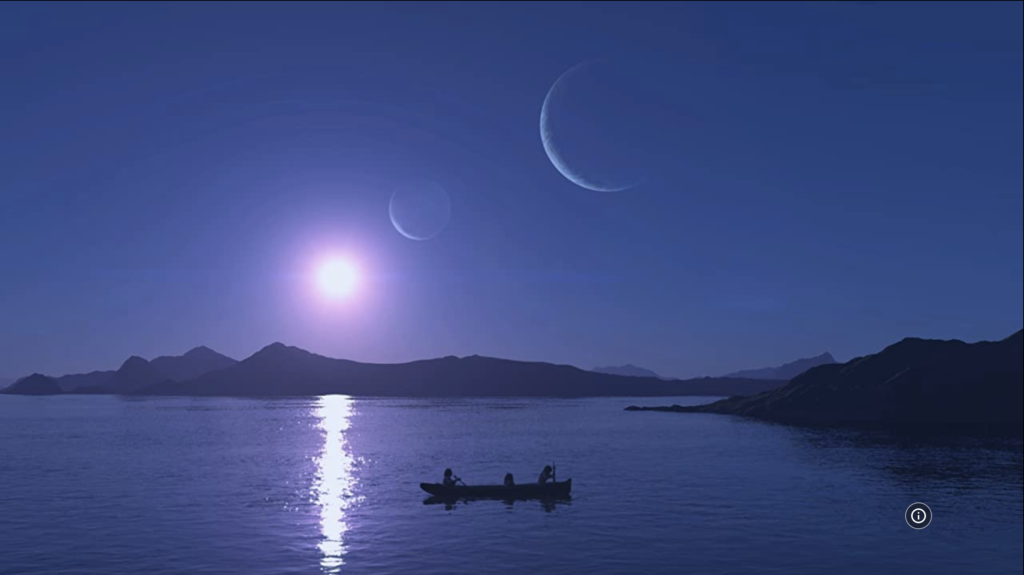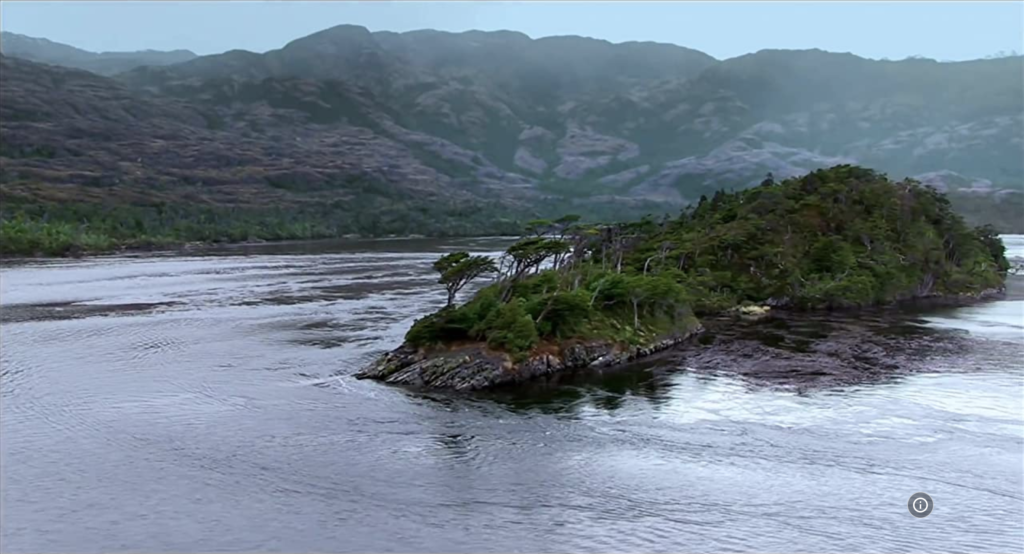This is an odd (well, queer) little piece I wrote a couple of years ago. I’m not sure if it stands alone, but I’m not sure what else to do with it, so I’ll just leave it here. It begins with an attempt to imagine myself as an Indigenous ancestor in a part of the world I’ve never visited. I wrote it partially because I was worried about the ways in which cries of ‘cultural appropriation’ might shut down valuable attempts to think through and learn from the experience of others, and partially because I wanted to think through processes of (negative) queering as part of the operation of colonialism and how (positive) queering and imaginative worldmaking might help to combat them. And finally, a little about Queer Island: it is a real place, located as described below.
I am approaching Queer Island, a small, uninhabited island off the tip of a peninsula south of Kodiak in Chiniak Bay. This is the home of the Alutiiq / Sugpiaq people. I am in a skin-covered qayaq, just a membrane between me and the deep, clear ocean. It is not gravity that holds me down, but instead the great swelling mass of water that pushes up beneath my craft. Pines rise from the scrubbed rocks of the shore. The only sound is the wind curling into my ears and the rhythmic dip of the paddle. As I approach the shore the water is calm and I can see far down to seaweed covered rocks below. Nearer still fat starfish in shades of peach and yellow and pink spangle across the seabed. As I alight I avoid treading on them in my long sea lion skin boots. It’s here, at the margin of land and water, that so much hunting and foraging takes place, and it is this rich coast that defines and that feeds me as much as the dark open water or the stony ground beneath my feet.
This has also been a place of death. In 1784, just across the bay at Refuge Rock, a rock stack reached by a tidal land bridge which we call Awa’uq, “where one becomes numb”, 2000 of my ancestors were massacred and a thousand captured by Russian settlers armed with guns and cannons. Even children were taken as hostages.
If I abandon now the voice of the Alutiiq and travel south along the coast as myself, a white man the child of European settlers, past the lands of peoples like the Tlingit and the Haida, sustained by the shellfish and the once-abundant salmon, past what’s now called Vancouver Island through the Salish Sea, I come past the San Juan Islands where once I worked in restaurants during the tourist season. It’s such a beautiful place but I feel so melancholy there remembering long hard hours and the heavy drinking that goes with them. Puget Sound runs south from there, petering out eventually into Mud Bay near Olympia, Washington.
To the west is the great damp and towering rain forest of the Olympic peninsula, home to the Makah, Quileute, Hoh, Quinault, Skokomish, and S’Klallam, where moss hangs from and clings to every surface. If I continue to travel south from there I arrive in Portland, Oregon, where again I find my young self. It’s 1991 and I’m a student standing looking at a flyer someone has posted on the Mount Hood Community College campus walls. On it is a map of a vast tropical Pacific zone, with the tiny Tabuaeran atoll of Kiribati, to which a hasty arrow has been drawn, and the following written by hand: “Gay and Lesbian equal rights here.” it said, “Keep it in the closet.” I’m at once appalled and attracted, allowing myself the momentary fantasy of an all-queer all-erotic Pacific island paradise. Exile and quarantine intersect with the act of escape. Now the inhabitants of the atoll are witnessing it disappearing beneath the waves along with its fresh water aquifer. It is no paradise any more.
All along that route we find practices of renaming and reconfiguring, shaming, hiding, eradicating that are all part of the practices of othering and queering that relate to settler colonialism. It’s here that you, the reader, might stop me, worried that my imagination inhabiting these past indigenous lives is an act of cultural appropriation. Worried that my comparison of right wing anti-gay persecution in Oregon with the forms of ecocide and genocide that were visited upon the Indigenous peoples belong to wholly different realms of oppression. Worried that my speaking the names of Indigenous places and peoples exoticises them and distances them, continuing the process of othering and queering undertaken by generations of white settlers.
What I argue back, though, is that by speaking the names we call forth the lives, the landscapes, the practices, lifeworlds, lifeways. Worlding is an imaginative act. With the right intentions the imagination is a tool for empathy. The othering that calls forth hatred, incomprehension, and death: the queering that is smearing, with the right intentions become windows to other (queer) worlds and other (queer) possibilities. Of course our imaginations have cultural limits, but if we don’t stretch them they become stiff. What’s occurring is an act of translation, and translation requires empathy, openness, and attention. What is afoot in colonialism is often precisely a refusal to translate and the urge to erase what it refuses to translate. Landscape is now more about translation than it is about writing or inscribing or fixing.
That we are understanding landscape as a dialogic medium at the moment that that medium is changing is valuable. The landscapes we inhabit will become increasingly unfixed in decades ahead, and acts of translation will have to take place within landscapes we already inhabit and not just those which are objects of study.
Landscapes in Europe, at the source of the colonial project, are also subject to capitalist and colonial practices, and often the forms visited upon Indigenous populations overseas were practiced in Europe first. Dispossession, expropriation, erasure, clearance, and plantation. Genocide and ecocide are paired projects, as with the ploughing of the American plains and the massacre not only of people, but of the bison that were fundamental to Indigenous foodways and lifeways.
It is essential to be able to imagine these lifeworlds not only because of mere empathy, but to learn about what it means for a people to live through and survive an apocalypse, and to understand that the apocalypse happened both ‘at home’, so to speak, and abroad. That we have alternative imaginaries to hand is crucial in light of our currently unfolding apocalypse.
And I want to finish by making mention of Chilean director Patricio Guzmán’s astonishing films Nostalgia for the Light and The Pearl Button, which between them place the landscapes of the Atacama Desert and the cold, misty archipelagos of Tierra del Fuego and Patagonia within the context of astronomical time and outer space, the eradication of Indigenous peoples by settler colonialism, and the brutality of the Pinochet dictatorship. The desaparecidos, the imprisonments and tortures by a monolithic inflexible regime that queered Chilean radical politics is held side by side with the ways in which settler colonialism queered the lifeworlds of people like the Yaghan, Selk’nam, and Kawesqar. These people, who painted their bodies to reflect their cosmology and their spirit world, saw the European sheep as prey to be hunted. They were, in turn and as a result, themselves hunted and murdered by European settlers. Can land use be queer? Yes, everywhere, and in this case it led to the almost total extinction of the people, their language, and their lifeways.
Still, as Guzmán shows, we can also learn from those who didn’t survive an apocalypse, and again the imagination is our aid here. There is hope for our climate changed future, but only if we open fully to the other and learn, only if we see the processes at work in climate change as part of the necropolitical engines of capitalism and imperialism, and only if we begin to imagine whole new worlds. For this we need a worlding, queer, and utopian imagination.

